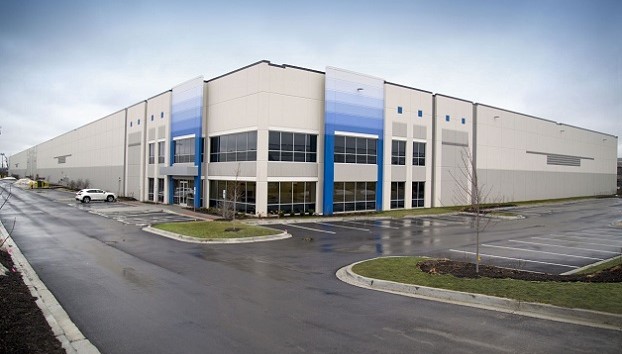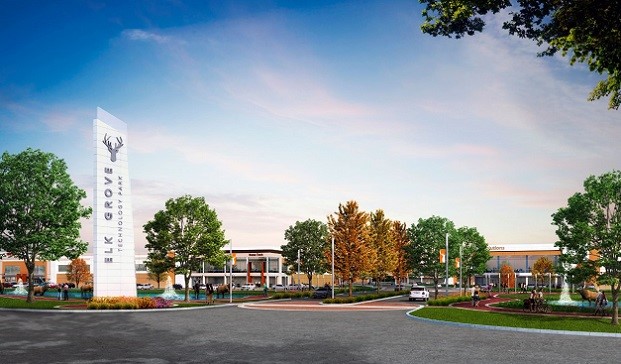
CHICAGO—The region's industrial market continued to expand at a historic pace in the first quarter, and with tenant demand fueling strong leasing, all signs point to a very solid 2018. Leasing velocity increased by 36.4%, with 273 leases totaling 7.5 million square feet completed, according to research from Avison Young's Chicago office. The volume of completed construction projects also increased — by 58.8% to 2.7 million square feet. And overall vacancy sank 40 bps to 5.9%.
Some of the most notable changes are happening in the O'Hare submarket, which saw 519,314 square feet of absorption and had a vacancy rate of just 4.5%. Developers there also had 1.84 million square feet of new space underway at the end of the first quarter, an increase of 625% year-over-year.
“I've been working the O'Hare market for 28 years, and this is definitely the most amount of new product that we've seen coming to the market,” Christopher Lydon, an Avison Young principal in Chicago and member of the firm's industrial practice group, tells GlobeSt.com.
He attributes this remarkable level of development to several factors. First, many of O'Hare's industrial buildings are past their useful lives. Furthermore, the tremendous surge in demand from freight forwarding firms and 3PLs, many of which need space near the airport, has made it possible for developers to buy and demolish these old structures, and break ground on state-of-the-art distribution facilities.
Most of the new buildings rising around the airport are small- to medium-sized buildings, usually less than 400,000 square feet and divisible down to much smaller spaces, Lydon says. That flexibility will help the new space get absorbed over the rest of 2018. “The developers have been very strategic on what they build. They're going to have something for everybody.”
He points out that land in the dense O'Hare submarket usually costs about $20 per square foot. For developers creating big boxes, “those numbers warrant looking at different submarkets,” such as the I-55 and I-80 submarkets, where land costs about one-fourth as much.

The rise of e-commerce continues to help fuel a steady expansion in these outlying areas. The I-80 submarket currently leads the Chicago region. After adding 8.1 million square feet last year, developers there had 4.5 million square feet under construction in the first quarter. The I-55 came in a distant second with 1.9 million square feet under construction.
Overall, developers in the Chicago metro area have 9.9 million square feet under construction, with 72% of it being speculative. That's a high proportion, but Lydon says it's appropriate considering the level of demand. “Right now, there is a lot of user confidence in the marketplace.”
But while the I-80 area has far more space under construction, much of that is on formerly vacant land. By contrast, the robust industrial demand has transformed the O'Hare submarket by filling up vacant land and sweeping away buildings from another era.
Bridge Development Partners, LLC has been one of the most active developers in that transformation. Recently it acquired 48 acres at 10601 Franklin Ave., a tract of infill land in Franklin Park, IL, for $27 million. The site was owned by Magellan Pipeline Co., a division of Magellan Midstream Partners, an oil pipeline, storage and transportation company, and held 14 massive storage tanks. Bridge plans to replace that collection with a set of new buildings totaling 656,189 square feet.
“Institutional capital has a great appetite for industrial product around O'Hare,” Lydon adds, another factor that has boosted the confidence of merchant developers. For example, last year Bridge leased up and sold four recently-completed industrial buildings in Chicago's O'Hare market totaling 491,010 square feet. The portfolio sale price was $69,275,000.
The changes around O'Hare are way past the beginning stages, Lydon says. “Everyone has been chasing these opportunities for the last five or six years.” As reported in GlobeSt.com, Brennan Investment Group recently bought Elk Grove Village's 85-acre Busse Farm. The firm plans to create Elk Grove Technology Park, which will offer 1.2 million square feet of high-image, state-of-the-art industrial and data center space, one of the largest of its kind in the country.
“That was the last remaining vacant site in the O'Hare market,” says Lydon.
© Touchpoint Markets, All Rights Reserved. Request academic re-use from www.copyright.com. All other uses, submit a request to [email protected]. For more inforrmation visit Asset & Logo Licensing.







